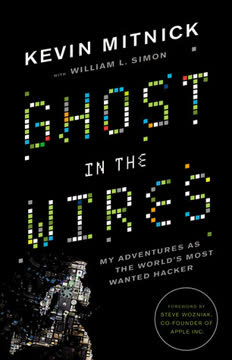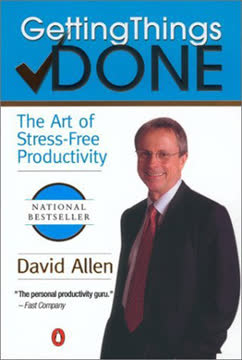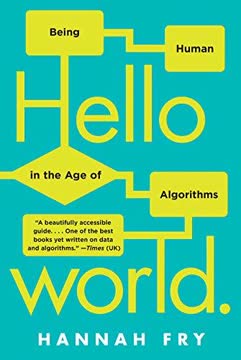Key Takeaways
1. Overcome fear of public speaking through comedy techniques
"Modern-day public speaking forces you to become a performer, and as such your happiness will often be determined by the happiness of those for whom you perform."
Comedy as a gateway skill. By studying and applying stand-up comedy techniques, you can transform your fear of public speaking into confidence. This approach allows you to develop engaging content, improve delivery, and connect with your audience more effectively. Comedy provides a structured framework for crafting memorable presentations and helps you overcome stage fright by focusing on entertaining your audience.
Harness nervous energy. Understand that the physical symptoms of nervousness, such as increased heart rate and sweating, are actually signs that your body is preparing for peak performance. Embrace this heightened state of alertness and channel it into your delivery. Avoid using alcohol or other substances to calm your nerves, as they can impair your performance. Instead, use techniques like stretching and deep breathing to manage your energy and focus.
2. Craft compelling stories to engage your audience
"The most powerful stories are not about the storyteller; they are about the person who is hearing the story."
Start with personal experiences. Draw from your own life to create relatable and authentic stories that resonate with your audience. Focus on moments of vulnerability, failure, or transformation, as these tend to be the most engaging and memorable. Use the "story funnel" technique to make your narrative accessible:
- Begin with a broad, relatable topic
- Narrow down to your specific experience
- Share the key details that make your story unique and interesting
Structure your story effectively. Follow the three-act structure to create a compelling narrative arc:
- Setup: Introduce the characters and setting
- Confrontation: Present the main challenge or conflict
- Resolution: Share the outcome and lessons learned
Include elements like a clear protagonist, specific challenges, emotional depth, and a transformative lesson or realization to make your story more impactful.
3. Incorporate humor strategically in presentations
"The safest humor involves personal stories, because they are guaranteed to be original and unheard, they can be practiced and perfected, and they are highly personalized to your style."
Use the Rule of 3. This classic comedy technique involves setting up a pattern with two items and then breaking it with an unexpected third item for comedic effect. For example: "I celebrated Thanksgiving in an old-fashioned way. I invited everybody in my neighborhood to my house, we had an enormous feast, and then I killed them and took their land." (Jon Stewart)
Leverage different types of humor. Incorporate various humor techniques to keep your presentation engaging:
- Self-deprecating jokes (in moderation)
- Observational humor about common experiences
- Wordplay and puns
- Visual gags or funny images
- Callbacks to earlier jokes or references
Remember to keep your humor appropriate for your audience and relevant to your message. Avoid offensive or controversial topics that could alienate listeners.
4. Master the art of writing funny material
"Good writing helps good marketers become great marketers. If you have a website, you are a publisher. If you are on social media, you are in marketing. And that means we are all writers."
Focus on brevity and punch. When crafting jokes or humorous anecdotes, aim to use as few words as possible to get to the punchline. Edit ruthlessly, cutting out unnecessary details that don't contribute to the humor. Remember the "three-line rule": if you go more than three lines without something funny, it's too long.
Utilize comedy writing techniques:
- Use inherently funny words (e.g., "kerfuffle," "bamboozle")
- Employ misdirection to surprise your audience
- Create analogies and metaphors to explain complex ideas humorously
- Exaggerate for comedic effect
- Incorporate current events or pop culture references
Develop a "funny file" to collect observations, anecdotes, and ideas that you can draw from when preparing your presentations. Regularly practice writing jokes and humorous stories to improve your skills.
5. Practice and refine your delivery for maximum impact
"The harder you work, the more natural you will be on stage."
Rehearse extensively. Practice your material as much as possible, focusing on your delivery, timing, and body language. Record yourself and review the footage to identify areas for improvement. Aim to practice in conditions similar to your actual presentation setting:
- Stand up while rehearsing
- Use a microphone if you'll have one during the presentation
- Practice in front of a small audience (friends, family, or colleagues)
Master your stage presence. Pay attention to non-verbal aspects of your delivery:
- Maintain eye contact with your audience
- Use natural hand gestures to emphasize points
- Vary your vocal tone and pacing for emphasis
- Move purposefully on stage to engage different sections of the audience
Develop a pre-presentation routine to help you get into the right mindset, such as stretching, deep breathing, or visualizing success.
6. Control the audience and manage disruptions effectively
"You need to make the audience like you, but you also need to be able to control them collectively, as they will decide collectively if they want to listen to you."
Establish authority from the start. Begin your presentation with confidence and energy to set the tone for your audience. Use techniques like asking for applause or engaging the audience with a quick question to assert control and focus their attention.
Handle interruptions gracefully:
- Acknowledge and repeat questions or comments to buy time and ensure everyone heard
- Use humor to defuse tension or redirect attention
- Be prepared with polite but firm responses to potential hecklers or disruptive audience members
- Practice improvisation techniques to adapt to unexpected situations
Always maintain a professional demeanor and avoid getting into arguments or confrontations with audience members.
7. Continuously evaluate and improve your performance
"Permanently Beta: Close the book on your story but never fully on your performance."
Implement a scoring system. After each presentation, evaluate your performance using a structured approach:
- 5 points: Everyone laughs out loud and applauds
- 4 points: Laughter and one or two claps
- 3 points: Laughter but no applause
- 2 points: Medium laughs
- 1 point: Very few laughs
Calculate your "laughs per minute" (LPM) score to track improvement over time. Aim for 4-9 LPM in a business context to be considered very funny.
Seek feedback and iterate. Regularly solicit input from trusted colleagues, mentors, or audience members. Use this feedback to:
- Identify your strongest material and most effective techniques
- Pinpoint areas for improvement in content and delivery
- Refine your jokes and stories for maximum impact
Remember that even experienced speakers and comedians continually work to improve their craft. Embrace a growth mindset and view each presentation as an opportunity to learn and refine your skills.
Last updated:
FAQ
What's "Do You Talk Funny?" about?
- Author and Purpose: "Do You Talk Funny?" by David Nihill is a guide to using comedy techniques to improve public speaking skills.
- Core Concept: The book outlines seven comedy habits that can make anyone a better and funnier public speaker.
- Personal Journey: It is based on Nihill's personal journey of overcoming his fear of public speaking by immersing himself in the world of stand-up comedy.
- Practical Advice: The book provides practical tips and exercises to help readers incorporate humor into their presentations and speeches.
Why should I read "Do You Talk Funny?"?
- Improve Public Speaking: The book offers actionable advice for becoming a more engaging and memorable speaker.
- Learn from Comedy: It teaches how to apply stand-up comedy techniques to business presentations, making them more entertaining.
- Overcome Fear: Nihill shares his own experience of overcoming the fear of public speaking, which can be inspiring for those with similar anxieties.
- Engage Audiences: By incorporating humor, readers can better connect with their audience and make their messages more impactful.
What are the key takeaways of "Do You Talk Funny?"?
- Seven Comedy Habits: The book outlines seven habits that can transform public speaking by making it more humorous and engaging.
- Storytelling Importance: Starting with a story is crucial for capturing attention and making content memorable.
- Humor Techniques: Techniques like the Rule of 3, punchlines, and callbacks are essential for adding humor to presentations.
- Practice and Preparation: Rehearsed spontaneity and continuous practice are key to delivering effective and entertaining speeches.
How does David Nihill suggest using humor in public speaking?
- Start with a Story: Use personal stories to engage the audience and make your message memorable.
- Find the Funny: Identify and incorporate humor in your stories using techniques like the Rule of 3 and punchlines.
- Rehearsed Spontaneity: Practice your delivery to make it appear natural and spontaneous, even if it's well-rehearsed.
- Audience Interaction: Engage with the audience through improvisation and by acknowledging the room's dynamics.
What are the seven comedy habits mentioned in "Do You Talk Funny?"?
- Start with a Story: Use storytelling to engage and connect with your audience.
- Add Humor: Find and incorporate humor into your presentations.
- Write Funny: Develop your comedic writing skills to enhance your material.
- Rehearsed Spontaneity: Practice your delivery to make it seem effortless and spontaneous.
- Delivery: Focus on how you present your material, including timing and body language.
- Control the Audience: Manage audience interactions and maintain their attention.
- Close the Book, but Not Fully: Continuously improve your skills and keep your material in Permanent Beta.
How does David Nihill address the fear of public speaking in "Do You Talk Funny?"?
- Personal Experience: Nihill shares his own journey of overcoming public speaking fear through comedy.
- Practical Exercises: The book includes exercises designed to build confidence and reduce anxiety.
- Rehearsal and Preparation: Emphasizes the importance of practice and preparation to manage nerves.
- Positive Mindset: Encourages viewing nervousness as a sign of readiness and using it to enhance performance.
What is the Rule of 3, and how is it used in "Do You Talk Funny?"?
- Pattern Recognition: The Rule of 3 is a comedic structure that uses a pattern of three elements to create humor.
- Surprise Element: The third element often breaks the pattern, creating a surprise that leads to laughter.
- Memorability: Information presented in groups of three is more memorable and engaging for audiences.
- Application: Nihill suggests using the Rule of 3 in jokes, stories, and even in structuring key points in presentations.
How does "Do You Talk Funny?" suggest improving delivery in public speaking?
- Start Strong: The first 30 seconds are crucial for setting the tone and engaging the audience.
- Use Body Language: Effective use of gestures and facial expressions can enhance delivery.
- Timing and Pauses: Proper timing and strategic pauses can build anticipation and emphasize key points.
- Practice: Continuous practice and recording performances help refine delivery and identify areas for improvement.
What are some of the best quotes from "Do You Talk Funny?" and what do they mean?
- "The human race has only one really effective weapon and that is laughter." - Mark Twain: This quote emphasizes the power of humor in communication and its ability to connect people.
- "Persistence is a great substitute for talent." - Steve Martin: Highlights the importance of practice and perseverance in mastering public speaking.
- "Brevity is the soul of wit." - William Shakespeare: Stresses the importance of being concise and to the point, especially in humor.
- "Stories are the currency of human contact." - Robert McKee: Underlines the significance of storytelling in engaging and connecting with audiences.
How does "Do You Talk Funny?" recommend handling audience interactions?
- Acknowledge the Room: Address obvious situations or audience reactions to build rapport.
- Engage with Questions: Use open-ended questions to involve the audience and keep them engaged.
- Handle Interruptions: Manage disruptions politely and use them as opportunities for humor.
- Control the Flow: Guide the audience's attention and maintain control over the presentation's direction.
What is the Bookend Technique in "Do You Talk Funny?"?
- Story Symmetry: The Bookend Technique involves referencing the beginning of a story at its conclusion for a sense of completion.
- Audience Engagement: It helps keep the audience engaged by creating a cohesive narrative.
- Memorable Endings: Provides a natural conclusion that reinforces the main message and leaves a lasting impression.
- Application: Nihill suggests using this technique to tie together the opening and closing of a presentation effectively.
How does "Do You Talk Funny?" suggest evaluating and improving public speaking skills?
- Continuous Evaluation: Regularly assess your performance using a scoring system for laughs per minute.
- Identify Strong Material: Focus on jokes and stories that consistently receive positive reactions.
- Refine Content: Use feedback and scores to refine and improve your material.
- Permanent Beta: Embrace the idea of continuous improvement and keep your skills in a state of Permanent Beta.
Review Summary
Do You Talk Funny? is highly praised for its practical advice on incorporating humor into public speaking. Readers appreciate the author's personal journey and actionable tips for improving presentations. The book is seen as valuable for both novice and experienced speakers, offering strategies to overcome fear and engage audiences. While some found it basic, most reviewers highlighted its usefulness in crafting memorable stories and jokes. The book's conversational tone and exercises were particularly well-received, making it a recommended read for those looking to enhance their public speaking skills.
Similar Books








Download PDF
Download EPUB
.epub digital book format is ideal for reading ebooks on phones, tablets, and e-readers.




